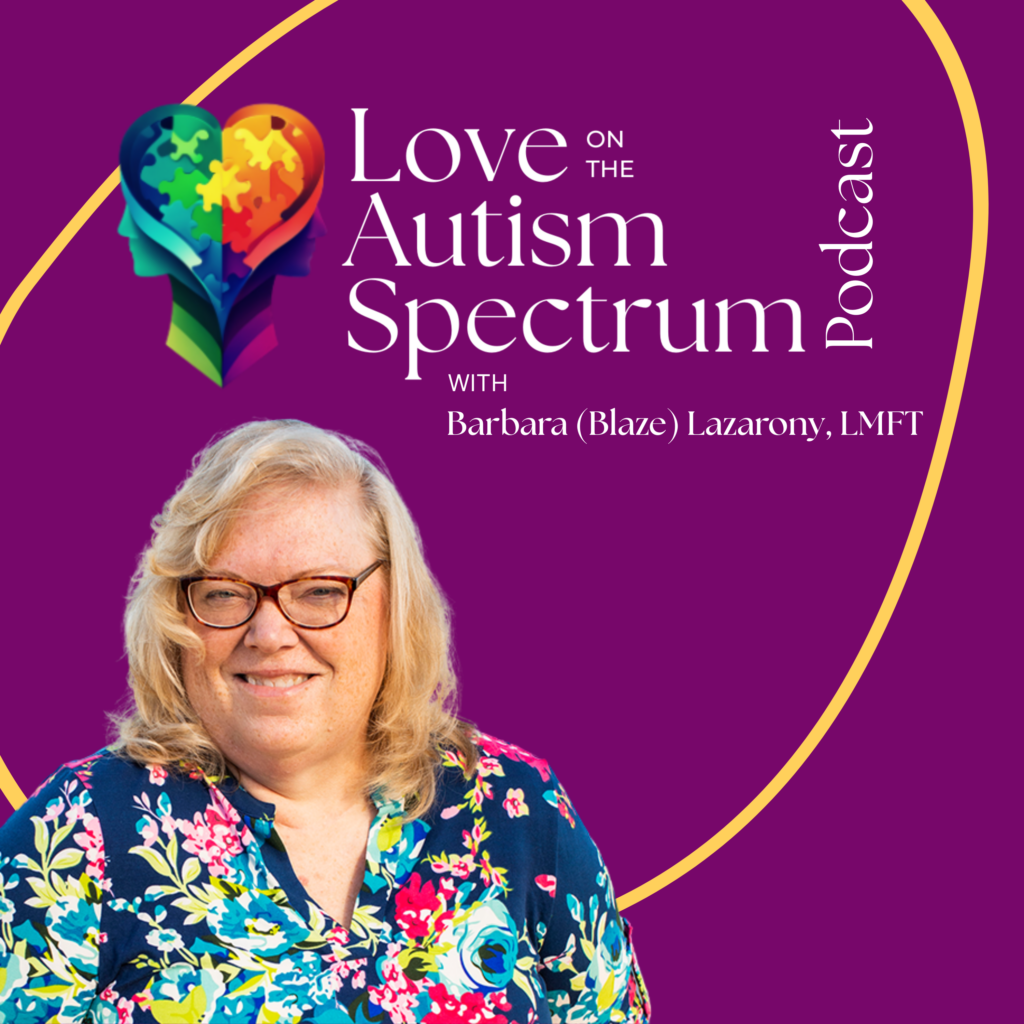Female Autism often goes undiagnosed or is misdiagnosed because it presents differently in female adults than it does in males. Most autism research has historically focused on males, leading to a lack of understanding of how autism manifests in females. Traditional diagnostic criteria are primarily based on male behaviors, which means many autistic females, or those with female autism traits, are not recognized or supported correctly.
This blog post highlights the unique ways autism appears in females and explores common traits, challenges in the autism diagnosis itself, and gender differences.
Key Takeaways
- Recognizing autism in females is challenging due to differing symptoms and the prevalence of masking, which can lead to underdiagnosis and misdiagnosis.
- Common traits in autistic females include social communication challenges, social interaction challenges, sensory sensitivities, and executive function difficulties, all of which require tailored strategies and support for effective management.
- Advocacy and awareness are crucial for improving diagnosis and support for autistic females, emphasizing the need for education on gender differences in autism to foster inclusivity and acceptance.
Recognizing Female Autism
Autism presents in extreme male brains but differently in females, often leading to underdiagnosis or misdiagnosis. The signs of autism in females can often go unnoticed due to masking, where they hide their symptoms to fit in socially. Research indicates that a significant number of females with autism remain undiagnosed, primarily due to differing symptoms compared to males. Traditional diagnostic criteria are based on male presentations, making it harder to identify autism in females who often exhibit subtler symptoms.
Females may internalize their symptoms more than males, affecting their behaviors and interactions. This internalization and the use of masking techniques make their autism less apparent, complicating the diagnosis. Additionally, social communication difficulties are a significant challenge for many autistic females, further complicating their social interactions and making it harder to recognize their condition.
Recognizing these differences helps identify autism in females and offers the proper support.
Social Interaction Challenges
Social communication difficulties are a hallmark of autism, and for females, these social communication challenges can be particularly nuanced. Autistic females often experience significant difficulties in making or maintaining friendships and managing conflict. However, research indicates that women on the autism spectrum report fewer social difficulties and usually feel more motivated to initiate friendships compared to their male counterparts.
Many autistic girls’ social challenges may be overlooked by educational professionals, even if they are enrolled in friendship groups. Clear communication and setting personal boundaries help autistic women navigate social interactions more successfully.
Masking and Camouflaging
Masking and camouflaging are extremely common among autistic females, often significantly shaping their social interactions and personal development. These behaviors involve adapting or suppressing autistic traits to blend into social groups, which can contribute to underdeveloped independence skills over time.
Autistic females may consciously or unconsciously mimic neurotypical behaviors, such as maintaining eye contact, mimicking speech patterns, or hiding sensory sensitivities, all in an effort to fit in and avoid being judged or misunderstood. This drive to camouflage is often fueled by the pressure to navigate social expectations and manage social interactions effectively. While these strategies can help them participate in social settings, they can also lead to exhaustion, stress, and a lack of focus on building authentic independence skills. Understanding the prevalence and impact of masking is crucial in supporting autistic females in developing self-acceptance and sustainable coping mechanisms. Continuous masking can detach autistic individuals from their true selves, complicating the process of seeking and receiving adequate support.
Sensory Sensitivities
Sensory processing is another common trait among autistic females, leading to heightened responses to various sensory stimuli such as:
- smell
- light
- sound
- touch
These intensified reactions may result in overwhelming situations, interfering with daily routines and impacting these girls’ and women’s overall comfort and quality of life.
Research indicates a significant occurrence of eating disorders like ARFID among autistic females, often linked to sensory sensitivities. Managing these sensory sensitivities is essential for enhancing daily functioning and overall well-being.
Common Traits of Autism in Females
Autistic females often exhibit traits and behaviors that differ from their male counterparts, influenced by societal expectations and internalization. Increasing awareness about the unique experiences and challenges faced by autistic women and autistic adult females is key to improving community support and understanding for autistic women.
These traits include repetitive behaviors, intense interests, executive function difficulties, and social communication difficulties. Recognizing these common autistic traits aids in identifying high-functioning autism symptoms in females and offering the necessary support.
Repetitive Behaviors
Repetitive behaviors are common in autistic individuals and can serve as a way for autistic people to cope with sensory overload or emotional regulation. However, girls with autism may exhibit these behaviors in a more subtle or subdued manner compared to boys, potentially making their autism less noticeable and more challenging to diagnose. Common examples of repetitive behaviors in autistic females include rocking, hand-flapping, and word repetition. However, these may be expressed less overtly, such as twirling hair or tapping fingers.
These stimming behaviors play an essential role in self-regulation, helping autistic individuals manage their sensory sensitivities, anxiety, and emotions. They are not simply habits but meaningful coping mechanisms that allow autistic individuals to navigate the challenges of their environment. Understanding these behaviors can provide valuable insights into the unique experiences and needs of autistic females, ultimately contributing to greater awareness and better support.
Intense Interests
Autistic females often demonstrate an intense focus on details and facts while also tending to have a broader range of interests compared to autistic males. These interests vary widely, including animals, fictional characters from comics, movies, and books, and more profound, abstract subjects like psychology. Unlike the narrower, more specialized interests typically associated with autistic males, autistic females may have diverse passions they explore in great depth.
These special interests often allow autistic females to develop profound expertise in specific areas over time. This can manifest in their ability to recall detailed information, analyze subjects deeply, and find innovative ways to apply their knowledge. Many autistic individuals, both male and female, find fulfillment in pursuing careers or hobbies that align with their passions. For autistic females, this alignment can provide an outlet for their natural curiosity and unique way of processing the world, leading to meaningful engagement and personal satisfaction. Their ability to connect with these interests often becomes a source of joy and empowerment, allowing them to thrive in areas celebrating their strengths and dedication.
Executive Function Difficulties
Executive functioning difficulties are another common trait among autistic females, impacting their ability to manage everyday tasks and responsibilities. A percentage of individuals may discover they have both Autism and ADHD, a combination often referred to as AuADHD. This dual diagnosis spectrum disorder can further complicate challenges, as ADHD traits like distractibility and impulsivity overlap with autism traits, making planning, organization, and time management particularly difficult.
These challenges may include struggles with creating and following structured plans, maintaining organization in daily life, and effectively managing time to meet deadlines or accomplish goals. Autistic individuals may also find it hard to adjust to changes in routine, work toward long-term goals, and prioritize tasks, which can lead to feelings of overwhelm or frustration.
Implementing structured routines can be incredibly beneficial, providing a sense of predictability and stability. For many autistic women, routines serve as a framework to navigate daily tasks with greater ease and confidence, reducing anxiety caused by uncertainty. Tools like visual schedules, reminders, and step-by-step checklists can further support executive functioning. By addressing these difficulties with tailored strategies, autistic individuals can enhance their daily functioning, achieve personal goals, and improve their overall well-being.
Mental Health and Co-occurring Conditions
Mental health challenges are prevalent among autistic females, with many experiencing co-occurring other mental disorders, health conditions and cognitive disorders. Social anxiety is a significant issue that can hinder the social lives of autistic females. The pressure to conform to societal expectations can lead to increased anxiety and stress.
Therapeutic interventions, such as cognitive-behavioral therapy (CBT), can help autistic women manage anxiety and develop coping strategies. Tackling these mental health challenges is essential for enhancing the quality of life for autistic females.
Anxiety and Depression
Autistic women and autistic people often experience high levels of anxiety and depression due to the internalization of their symptoms and other mental health challenges. Establishing predictable routines can significantly decrease anxiety levels and improve daily functioning.
Sensory items such as noise-canceling headphones and fidget toys can help manage overwhelming sensory experiences. Creating a sensory-friendly environment is crucial in helping autistic individuals manage their sensory sensitivities effectively.
Eating Disorders
There is a notable connection between autism and eating disorders, particularly ARFID and anorexia nervosa, in women. Autistic females are particularly vulnerable to developing these restrictive eating disorders compared to their male counterparts.
Knowing the link between female autism phenotype and eating disorders is crucial for offering the proper support and treatment. Tackling these eating disorders can enhance the mental and physical health of autistic females.
Other Co-occurring Conditions
Many females with autism also present with co-occurring conditions such as ADHD and complex trauma, which can make their experiences and needs more complex. These additional conditions often complicate the treatment and support that autistic females receive, as symptoms may overlap or interact in ways that make diagnosis and intervention more challenging. Estimates suggest that 22-83% of autistic children meet the criteria for ADHD, highlighting how common this co-occurrence is.
In addition developmental disorders due to ADHD, disorders related to trauma and PTSD are frequently observed in autistic females. These trauma-related conditions may stem from difficulties in navigating social environments, sensory sensitivities, or a history of being misunderstood or unsupported. Addressing these co-occurring conditions is essential for providing comprehensive care and tailored interventions that genuinely meet the needs of autistic females, ensuring they receive the support necessary to thrive in all areas of life.
Diagnosing Autism in Adult Females
Diagnosing autism in adult females presents unique challenges due to the subtler presentation of symptoms and the use of masking. Nearly 80% of females with autism remain undiagnosed by age 18, highlighting significant issues in identifying autism in this population. Traditional diagnostic tools often reflect male experiences, making it harder to identify autism in females.
Coping strategies that mask executive function challenges and disguise symptoms can complicate diagnosis for autistic females. Recognizing these challenges is key to enhancing the diagnosis process for autistic females.
Self-Diagnosis
Self-diagnosis can empower women to investigate their experiences and make sense of their challenges, validating their feelings and allowing them to explore autism as a lens for understanding themselves. Understanding possible autism traits through self-diagnosis can encourage women to seek professional help.
Recognizing self-diagnosis as a valid step can enhance acceptance and support the journey toward formal diagnosis and services. Self-diagnosis is a valid approach, especially where professional diagnosis is challenging to access or understand.
Professional Diagnosis by a Neurodiverse Therapist
Receiving a professional diagnosis by a neurodiverse therapist provides autistic adults with access to essential resources and support specifically tailored to their unique needs. A diagnosis not only offers validation and self-understanding but also opens doors to vital services that can help improve daily life, mental health, and overall well-being.
As a therapist based in California, I specialize in Adult Autism and ADHD Assessments, and a significant portion of my clients are women between the ages of 23 to 60 who are seeking clarity and answers about themselves. Many of these women have spent years navigating life without understanding the underlying reasons behind their experiences, and receiving a diagnosis can be a transformative first step toward self-empowerment and meaningful support.
Support and Therapies for Autistic Females
Support and therapies tailored for autistic females can significantly improve their quality of life. Therapeutic interventions like occupational and speech therapy can help improve daily living skills and communication. Cognitive Behavioral Therapy (CBT) is commonly utilized to assist adults with autism.
Tailored support helps autistic women recognize their strengths and advocate for their needs. Organizations dedicated to women’s autism issues offer mentorship and support national autistic society, addressing educational, employment, and relationship challenges.
Social Skills Training
Social skills training for autistic women enhances communication and helps them navigate social scenarios. These programs can improve autistic women’s abilities to interact and communicate effectively in various social settings.
Structured teaching methods use visual aids and clear routines to facilitate learning in social skills training. These programs help autistic women develop skills to build and maintain social relationships.
Community and Support Groups
Community and support groups offer vital emotional and practical support for autistic females. Online platforms provide a space for autistic women to connect and share experiences, combating feelings of isolation.
Local support groups provide face-to-face interactions that foster community and shared learning opportunities, enhancing living and communication skills.
Joining these groups helps autistic women:
- Build connections
- Share experiences
- Gain emotional support
- Gain understanding
Living with Autism as a Female
Living with autism as a female involves unique challenges, but with the right strategies and support, it is possible to lead a fulfilling life. Autistic females often struggle with organization and completing tasks, especially when tasks are not engaging.
Autistic women are at a higher risk of experiencing trauma and PTSD. Occupational therapy helps autistic women improve daily living skills and manage sensory sensitivities.
Managing Sensory Overload
Managing sensory overload is vital for autistic females who are heightenedly sensitive to sensory inputs. Sensory overload can disrupt daily activities and affect sleep patterns. Refined stimming behaviors, such as skin picking and hair twirling, can be coping mechanisms for managing sensory sensitivities.
Creating a sensory-friendly environment and using sensory tools can alleviate sensory overload.
Enhancing Executive Function
Autistic females often face challenges with executive functioning, including difficulties in planning, organization, and time management. Color-coded systems and visual organizers can significantly help them organize their daily tasks. Timers and specific deadlines can also enhance their time management skills.
These strategies can boost overall efficiency and reduce the stress tied to executive function difficulties.
Building Healthy Relationships
Social interaction difficulties make building healthy relationships particularly challenging for autistic females. Social skills training is crucial for enhancing, initiating, and maintaining relationships.
Community and support groups offer opportunities for connection, sharing experiences, and building friendships. Effective daily life strategies can help autistic females navigate social interactions more smoothly and enhance relationship-building skills.
Advocacy and Awareness
Advocacy and awareness are essential for fostering inclusivity and understanding of the autism spectrum disorder, in females. Education and community outreach can dispel myths about autism, leading to greater acceptance and integration.
Adapting community programs to accommodate individuals with autism promotes inclusivity and fosters participation and acceptance. Creating inclusive spaces where autistic individuals feel accepted and valued requires active effort from society.
Promoting Inclusivity
Inclusivity and acceptance of autistic individuals are crucial for their full integration into society. Social media offers a platform for autistic people and women to connect and share experiences, fostering community and advocacy.
Social media allows autistic individuals to share their stories and advocate for their needs, raising awareness and understanding of intellectual disability. However, society must actively work to create inclusive spaces where autistic individuals feel accepted and valued.
Summary
In conclusion, recognizing and understanding the unique experiences of autistic females is crucial for providing appropriate support and improving their quality of life. This journey involves continuous learning and self-acceptance, from recognizing the signs and common traits of autism female to managing daily life and advocating for awareness. By fostering inclusivity and promoting understanding, we can create a more supportive environment for autistic females.
Frequently Asked Questions
Why are many females with autism undiagnosed?
Many females with autism remain undiagnosed because traditional diagnostic tools focus on male presentations, and females frequently mask their symptoms. This results in many women understanding autism not receiving the recognition and support they need.
What are some common traits of autism in females?
Common traits of autism in females include social communication difficulties, challenges in social interaction, masking behaviors, sensory sensitivities, repetitive behaviors, intense interests, and problems with executive functions. Understanding these characteristics can enhance support and awareness.
How can autistic females manage sensory overload?
Autistic females can effectively manage sensory overload by creating a sensory-friendly environment, utilizing tools such as noise-canceling headphones, and maintaining a consistent routine. These strategies help mitigate overwhelming stimuli and enhance overall comfort.
Why is advocacy important for autistic females?
Advocacy is crucial for autistic females as it raises awareness, dispels myths, and fosters greater acceptance and support within society. This ultimately contributes to a more inclusive environment tailored to their unique needs.





